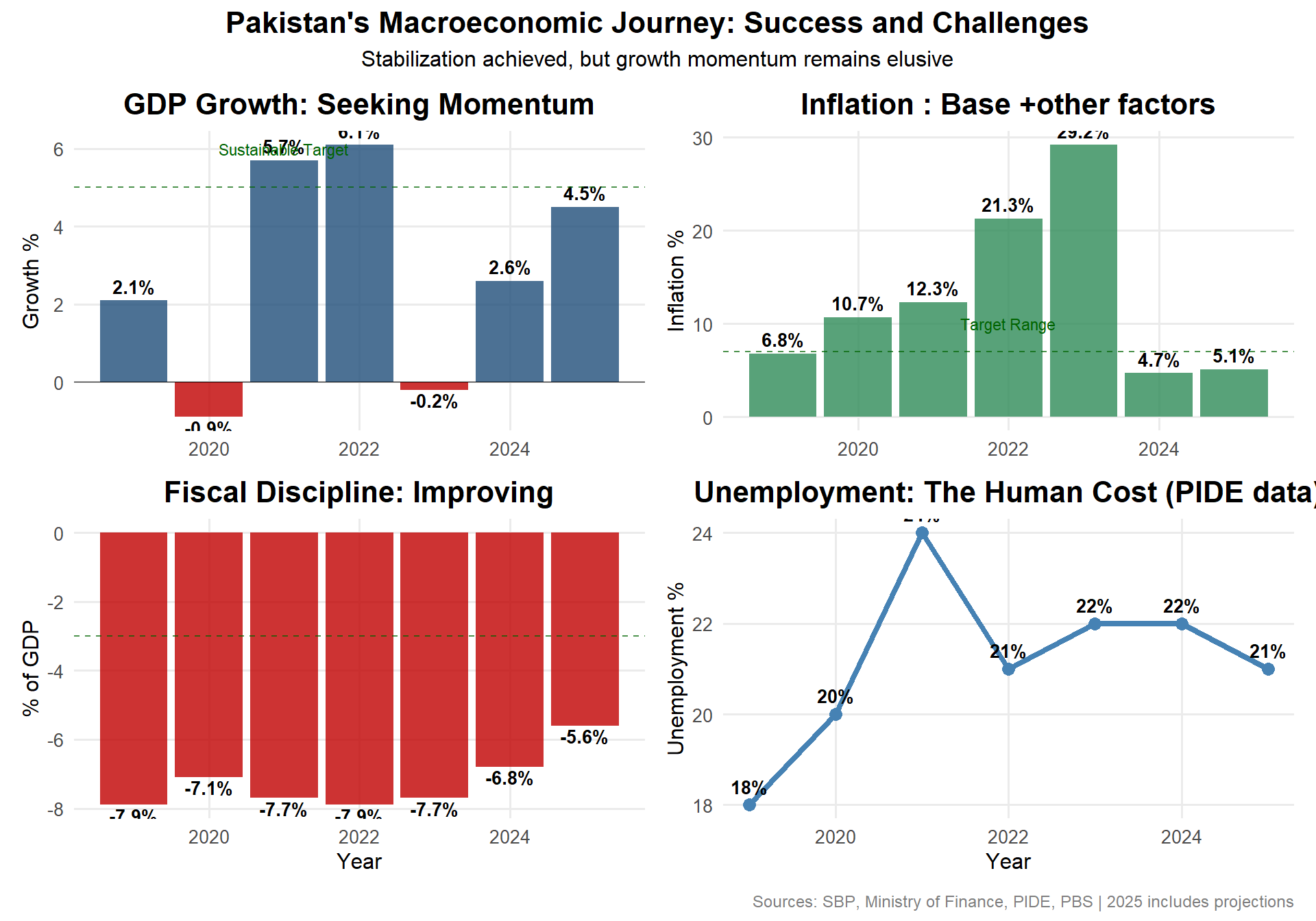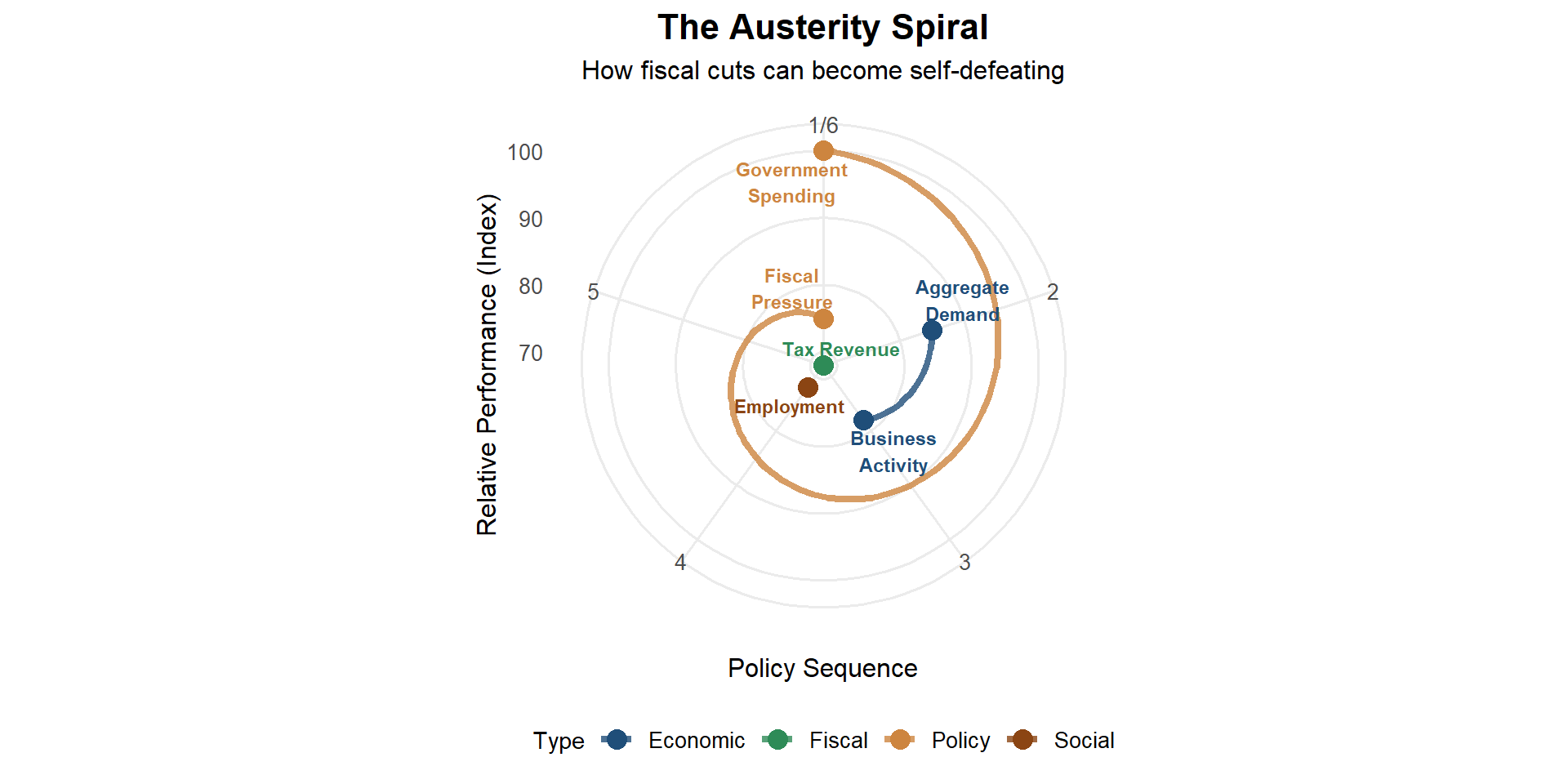Growth on Hold? Questioning the Logic of Prolonged Stabilisation
Balancing short-term macroeconomic control with the long-term need for structural investment
School of Economics, Quaid-i-Azam University, Islamabad
2025-07-11
The Central Question
“Stabilization without growth is treating symptoms while the disease progresses.”
Three Critical Questions
What is Pakistan stabilising from?
Twin deficits, debt stress, inflation spiral
Who bears the cost of prolonged stabilisation?
Youth, SMEs, informal workers, provinces
Can we afford to delay growth?
Lost decade vs. managed transition
Pakistan’s Economic Transformation: The Numbers Tell a Story

Budget 2025: Stabilization at What Cost?

The Budget’s Message
- What it emphasizes: IMF targets, fiscal discipline, debt management
- What it marginalizes: Development investment, job creation, productivity enhancement
- What it reveals: A budget for survival, not transformation
Kenneth Rogoff on Pakistan Debt Crisis
Pakistan’s Unique IMF Relationship
- Never been out of an IMF program in 75 years
- Currently on the 25th IMF program since independence
- Only country that has never made independent economic policy
The Geopolitical Reality
Kenneth Rogoff: “Pakistan is geopolitically very important… If you don’t sign off on bailout number 25, they’re going to default on bailout number 24”
Tax System & FBR Crisis

FBR
- Single-handedly shrunk formal sector over 15-20 years
- SUPER tax: Don’t grow
- Excessive discretionary powers scaring genuine investors
- Boosted informal economy which doesn’t contribute to productivity, revenues, or FDI
Tax Policy Contradictions
- Corporate tax rates too high (should be halved)
- Agriculture, Services, and Real Estate sectors under-taxed while all burden shared by Industrial sector and formal sector
- NFC distribution issues
- Last 3 years: collected more taxes than previous 14 years combined
The Primary Surplus Trap: When Math Meets Reality
Pakistan’s Debt Sustainability Crisis
The Numbers Don’t Add Up
- Real GDP Growth: 3%
- Real Interest Rate: 7%
- Required Primary Surplus: 2.3% of GDP annually
- Gap to Bridge: 4% per year through austerity
What is Primary Surplus?
Note
Primary Surplus = Government Revenue - Government Spending
(excluding debt service payments)
The money left over before paying interest on existing debt
Key Insight: When real interest rates (7%) exceed growth rates (3%), debt-to-GDP ratio deteriorates by 4% annually unless offset by fiscal surplus
The Mathematical Trap
Key Points:
- The Greece Model: Mandated primary surpluses until 2060 - same framework applied to Pakistan
- Policy Contradiction: Using growth-killing measures to solve a growth-dependent problem
The Krugman Insight: When Austerity Becomes a Trap
“Austerity in a depression is a trap — the more you cut, the weaker your economy becomes.” — Paul Krugman
The Austerity Paradox Applied to Pakistan

Traditional Logic:

Post-Budget Economic Analysis | School of Economics, QAU, Islamabad